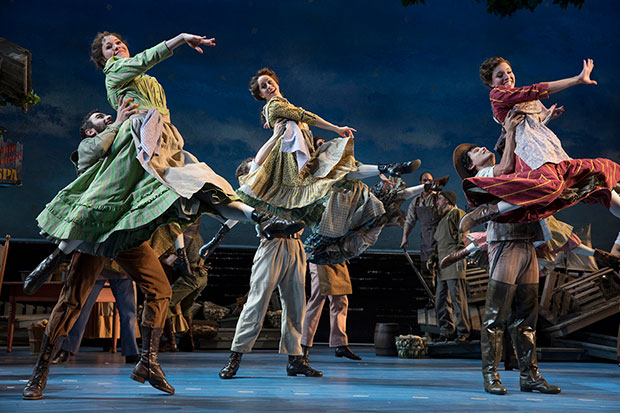
© Julieta Cervantes. (Click image for larger version)
Rodgers & Hammerstein’s Carousel
Choreography by Justin Peck
★★★★✰
New York, Imperial Theatre
14 April 2018, matinee
carouselbroadway.com
Love is Blind
Before one gets into a discussion about any production of Rodgers and Hammerstein’s Carousel it feels essential to come out and state the obvious: it’s a strange, problematic piece of musical theatre. There is an emotional dissonance at its heart. This dark tale of blind love and marital violence is set mostly to wonderfully cheery tunes, building to a rousing and sentimental finale. (“You’ll never walk alone,” the entire chorus sings out, with upturned faces, as the curtain falls.) The love affair between its two principal characters, the mild-mannered but strong-willed Julie Jordan and the wayward and violent Billy Bigelow, is almost impossible to understand. As we are reminded again and again, he beats her, or at least, as he puts it – in an attempt to justify himself – “I hit her once.” She, big-hearted woman that she is, forgives him: “What’s the use of wondrin’ if he’s good or if he’s bad – he’s your feller” she sings. At which point you want to take her gently by the hand and get her some help. People complain about opera plots, but there is something more discomfiting about the awkward way this conflict fits into a musical filled with jolly numbers like “June is Bustin’ Out all Over” and “Blow High, Blow Low, A-Whalin’ We Will Go.”
And yet, despite this dissonance, which the team in charge of the current revival of Carousel on Broadway could do nothing about, it is, in many ways, a wonderful show. Thanks to its director, Jack O’Brien, and choreographer, Justin Peck, it is full of singing and dancing, and it rolls along quite happily despite its considerable length – three hours, with one intermission. During the matinee on April 14, not even two interruptions caused by medical emergencies could stop its momentum. There is an old-fashioned quality to the whole endeavor. It’s direct, honest, full-out, and big hearted. The choreography is fluent and imaginative, but not distractingly so. Even the crisp maritime lighting by Brian MacDevitt is joyous. The singing is universally strong, unmannered, engaging. The whole thing creates such a positive energy that you half want to sing along.
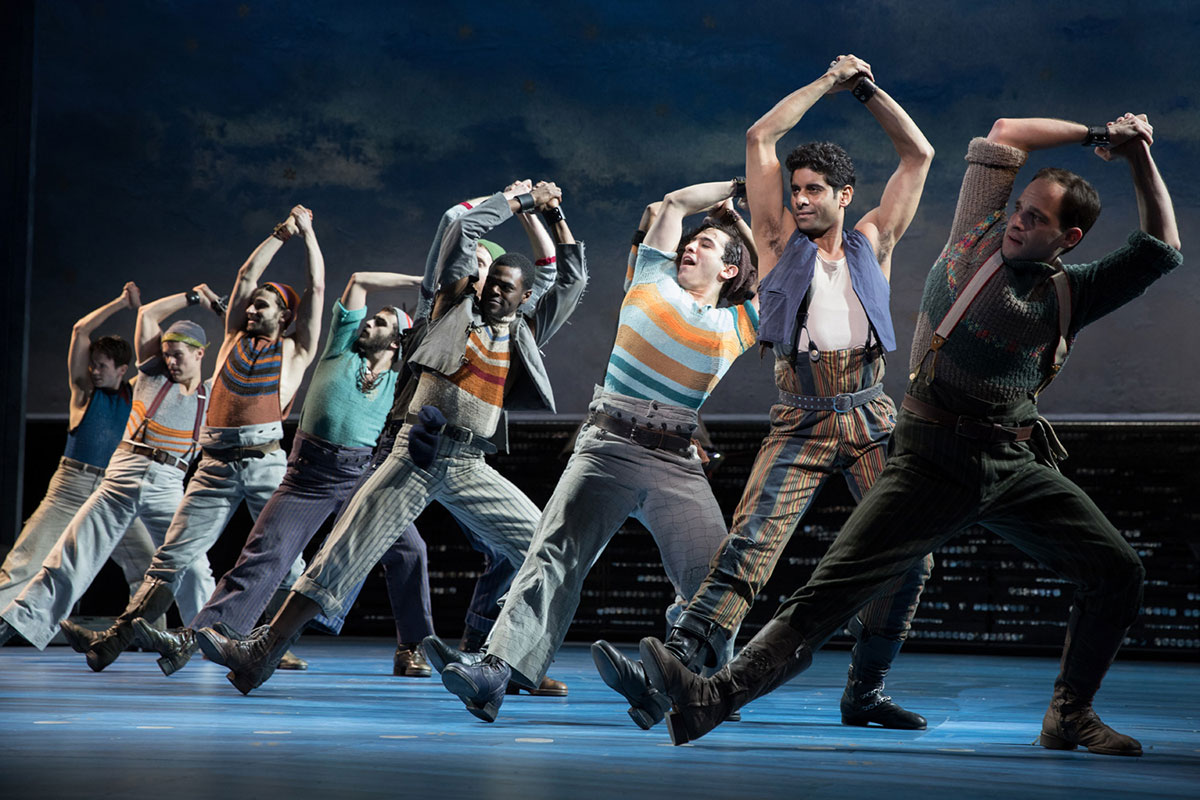
© Julieta Cervantes. (Click image for larger version)
One of the most attractive things about the production is the way it brings together various worlds: ballet, Broadway, and opera. Jack O’Brien, the director, is an experienced Broadway hand, with several Tony Awards under his belt (including one for The Coast of Utopia). Justin Peck is a brilliant young choreographer based at New York City Ballet. The cast includes several dancers from City Ballet (Amar Ramasar and Brittany Pollack), American Ballet Theatre (Craig Salstein), and Miami City Ballet (Andrei Chagas). And the matronly character of Nettie Fowler, protector of Julie, is sung by the opera soprano Renee Fleming. They all seem to coexist happily, naturally, each raised up by the talent of the rest of the cast.
Fleming’s floating high notes in “You’ll Never Walk Alone” are certainly a thrill, despite a habit of scooping the first note of almost every phrase. But everyone has a moment: Lindsay Mendez, who plays the role of Julie’s loud-mouthed friend, Carrie Pipperidge, is a brassy soprano and steals almost every scene. Alexander Gemignani, as her fatuous husband Enoch Snow, sings “When Children Are Asleep” in a rich tenor. Amar Ramasar tears up the stage as Bigelow’s sinister sidekick Jigger. Just as he does at City Ballet, he seems to be having more fun than anyone else onstage.

© Julieta Cervantes. (Click image for larger version)
Both Joshua Henry and Jessie Mueller make the best of what are fundamentally thankless roles; they’re both fine singers, too. Julie Jordan is good and loyal and sad; one never really understands what she sees in the bullying Bigelow. Joshua Henry makes Billy as likeable as he can, full of a rawness and hurt. Especially impressive is the way he uses his expressive eyes, giving them a haunted, terrified look. But the sudden transformation that occurs in him when he finds out he is going to become a father isn’t really that convincing, despite the intensity with which Henry delivers a difficult aria that changes mood at least three times. It’s not his fault – it’s Rodgers and Hammerstein’s. The fact that Henry is African-American neither adds to nor subtracts from the story; the casting is diverse, and race is not alluded to in the libretto in any way.
Peck has done a truly fine job with the dances. There’s something old-fashioned about them, too. The choreography for the original show was by Agnes de Mille, and Peck has captured some of that classic American choreographer’s down-home spirit. The main vocabulary is ballet, but there’s nothing rarefied or pretentious about it. There are happy couple dances with quick, low lifts, and the ensemble moves in waves and chains and ingenious formations. The sailor dance is a triumph, with hints of hornpipe and a soft-shoe that plays around with the rhythms in the music. To the famous “Carousel Waltz,” Peck has created a neat pattern of concentric circles within which the women become both the horses and the riders. All of Peck’s usual skills (dexterity with the ensemble, great use of stage space, quick, clean patterning) are put to use here, creating a sense of energy and joy.
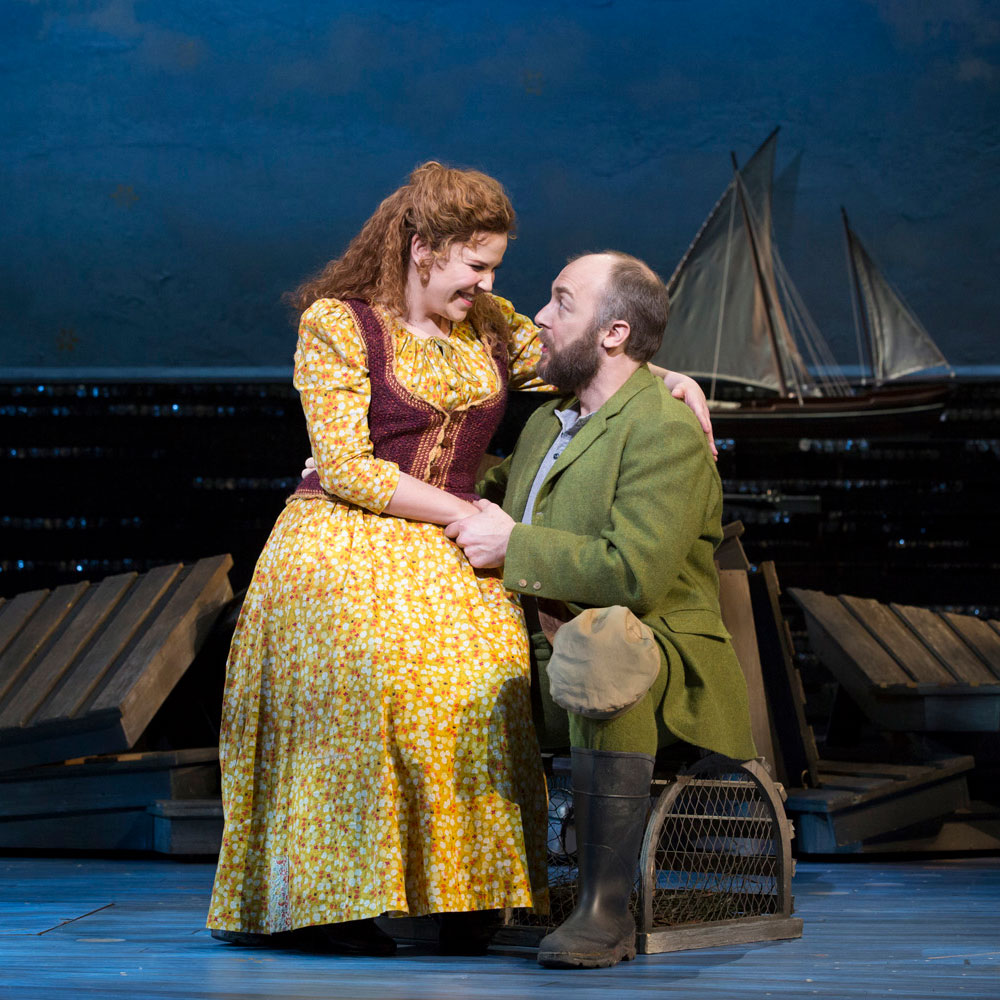
© Julieta Cervantes. (Click image for larger version)
The only place where his ingenuity fails him is in the famous ballet in the second act, in which Bigelow descends from heaven (after killing himself during a botched robbery in the first act) to check on his daughter, Louise. She dances a duet with an unnamed young man that strongly echoes her parents’ courtship. (It’s like a play within the play.) Instead of finding a language through which to tell Louise’s story, as De Mille did, Peck has created a more or less generic pas de deux. It doesn’t do the trick.
But this is a small quibble. For the most part, this revival of Carousel makes for a highly enjoyable show. That is, once you get over the elephant in the room. It will be interesting to see how Carousel plays in 2018. But there is no doubt that this team has made the best possible case for it.












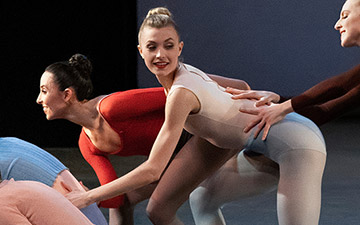


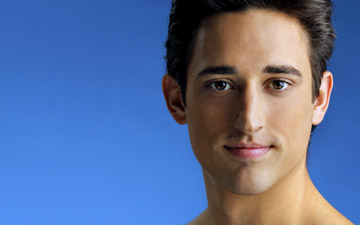
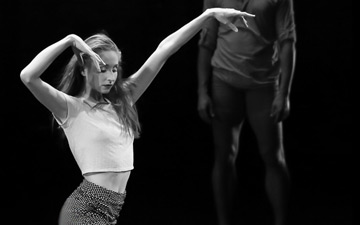
You must be logged in to post a comment.